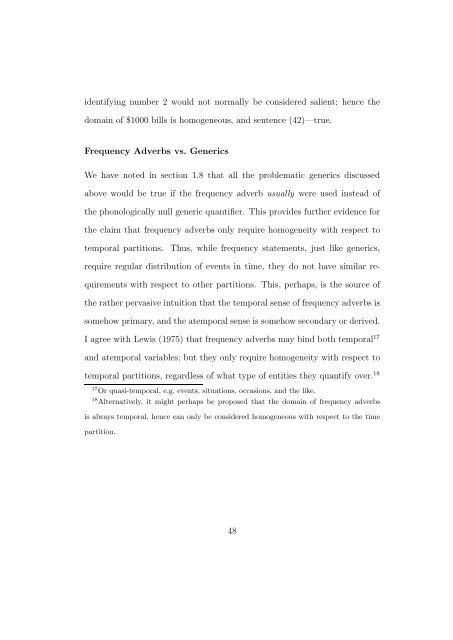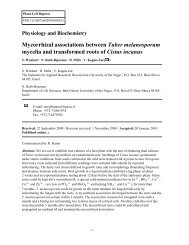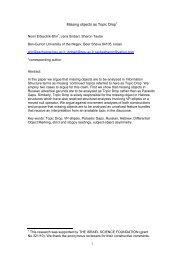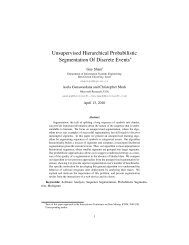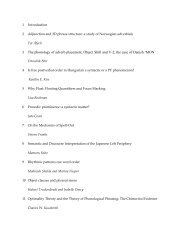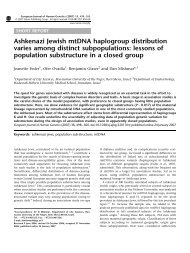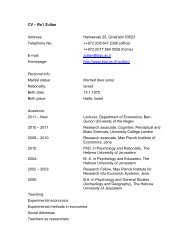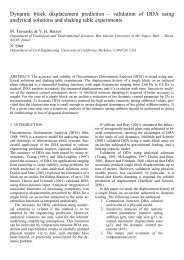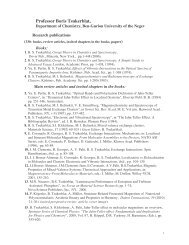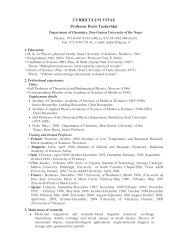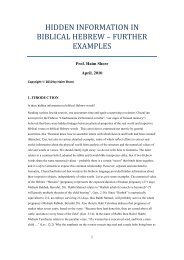Generics, Frequency Adverbs, and Probability
Generics, Frequency Adverbs, and Probability
Generics, Frequency Adverbs, and Probability
You also want an ePaper? Increase the reach of your titles
YUMPU automatically turns print PDFs into web optimized ePapers that Google loves.
identifying number 2 would not normally be considered salient; hence the<br />
domain of $1000 bills is homogeneous, <strong>and</strong> sentence (42)—true.<br />
<strong>Frequency</strong> <strong>Adverbs</strong> vs. <strong>Generics</strong><br />
We have noted in section 1.8 that all the problematic generics discussed<br />
above would be true if the frequency adverb usually were used instead of<br />
the phonologically null generic quantifier. This provides further evidence for<br />
the claim that frequency adverbs only require homogeneity with respect to<br />
temporal partitions.<br />
Thus, while frequency statements, just like generics,<br />
require regular distribution of events in time, they do not have similar requirements<br />
with respect to other partitions. This, perhaps, is the source of<br />
the rather pervasive intuition that the temporal sense of frequency adverbs is<br />
somehow primary, <strong>and</strong> the atemporal sense is somehow secondary or derived.<br />
I agree with Lewis (1975) that frequency adverbs may bind both temporal 17<br />
<strong>and</strong> atemporal variables; but they only require homogeneity with respect to<br />
temporal partitions, regardless of what type of entities they quantify over. 18<br />
17 Or quasi-temporal, e.g. events, situations, occasions, <strong>and</strong> the like.<br />
18 Alternatively, it might perhaps be proposed that the domain of frequency adverbs<br />
is always temporal, hence can only be considered homogeneous with respect to the time<br />
partition.<br />
48


